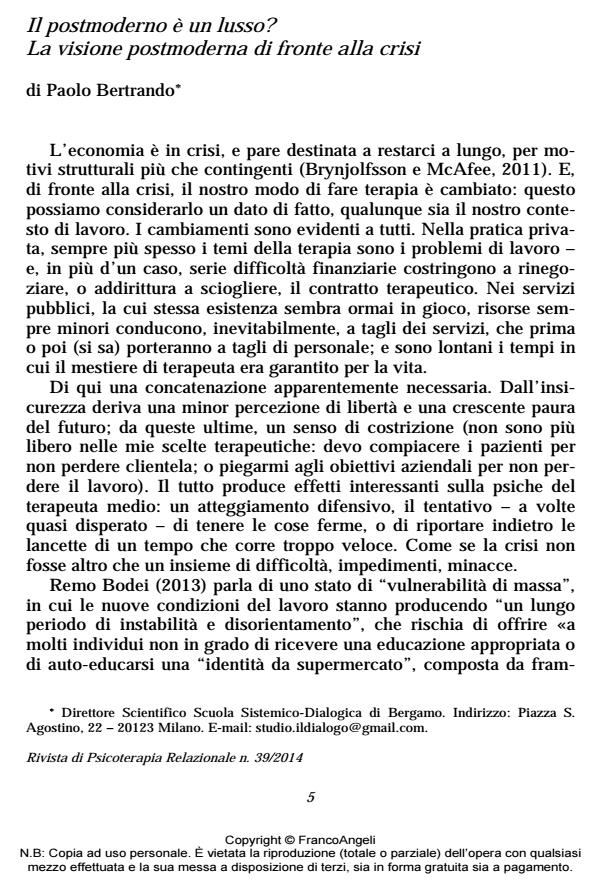Is postmodernism a luxury? The postmodern view and the global crisis
Journal title RIVISTA DI PSICOTERAPIA RELAZIONALE
Author/s Paolo Bertrando
Publishing Year 2014 Issue 2014/39
Language Italian Pages 19 P. 5-23 File size 85 KB
DOI 10.3280/PR2014-039001
DOI is like a bar code for intellectual property: to have more infomation
click here
Below, you can see the article first page
If you want to buy this article in PDF format, you can do it, following the instructions to buy download credits

FrancoAngeli is member of Publishers International Linking Association, Inc (PILA), a not-for-profit association which run the CrossRef service enabling links to and from online scholarly content.
In recent years, systemic theory have been characterized by a primacy of postmodernism and social constructionism, which identified therapy with a change in language or narrative, where any problem could be dissolved, rather that resolved. the present global crisis makes it necessary to build models based on a non-naive realism, accepting the necessity to deal with hard and non modifiable realities, at the same time preserving the systemic heritage of freedom, resilience, and emphasis on strengths. The article proposed some possible evolutions of the systemic model, that may allow to accept and relaunch such a challenge.
Keywords: Postmodernism, social constructionism, systemic model, economical crisis.
Paolo Bertrando, Il postmoderno è un lusso? La visione postmoderna di fronte alla crisi in "RIVISTA DI PSICOTERAPIA RELAZIONALE " 39/2014, pp 5-23, DOI: 10.3280/PR2014-039001